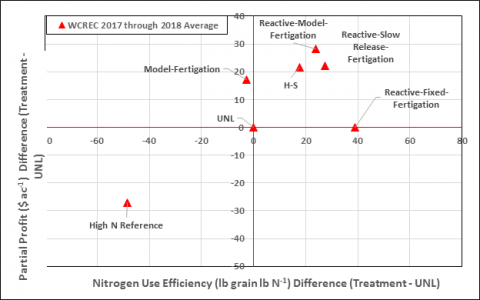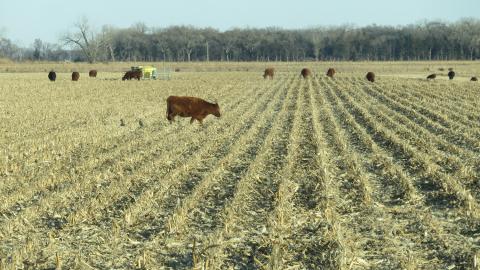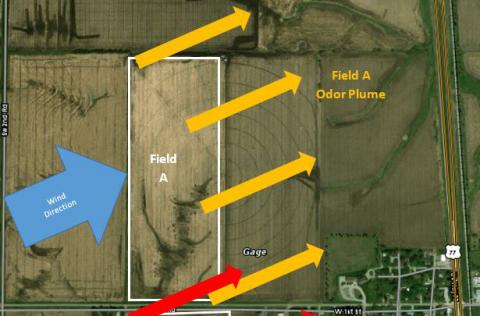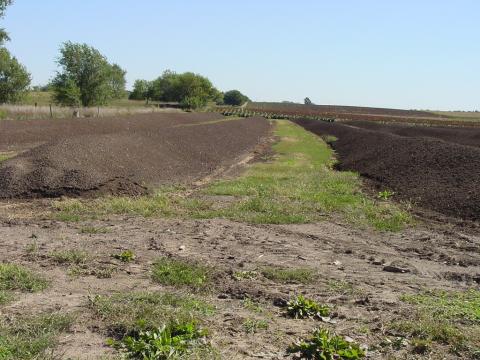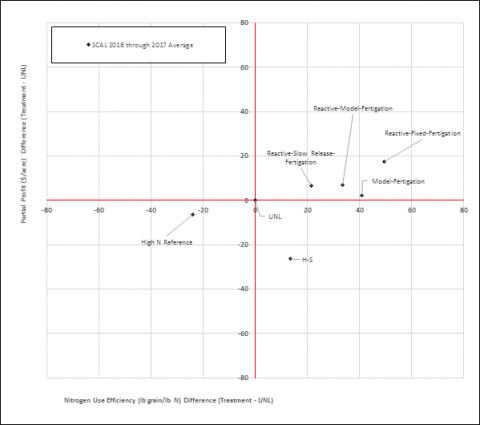Profit and Nitrogen Use Efficiency Gain Using Sensor-Guided Fertigation
January 9, 2019
A UNL study of sensor-based and model-informed fertigation treatments confirms that sensor fertigation treatments are consistently the most profitable and efficient methods of applying N compared to current best management practices (BMPs).
Nutrient Removal by Cows Grazing Corn Residue
November 5, 2018
Nutrient removal by cows grazing corn residue may not be as much as you might think. Here a livestock and a forage specialist break down the numbers and look at removal rates for organic matter and minerals.

Is Late Season N Fertilization Warranted for Irrigated Soybean in Western Nebraska?
November 2, 2018
On-farm research trials were conducted in three southwest Nebraska counties to study whether a late season N application during the pod setting and seed filling phases would increase soybean yields.
Estimating Nitrogen Credit from Manure
September 5, 2018
Nitrogen in manure requires some simple planning to insure it's given proper credit for offsetting commercial fertilizer inputs. This Water.unl.edu article offers key information for calculating N credit.
Timing Manure Application to Avoid Neighbor Nuisances
August 14, 2018
Roughly half of all neighbor complaints of livestock odors originate from land application of manure. This article outlines the weather conditions to consider when planning a manure application.
Can I Irrigate Animal Manures On Growing Crops?
June 27, 2018
Recent heavy rains have many feedlot holding ponds full and operators looking for irrigation options to apply animal manure during the growing season. Here are some considerations for applying diluted animal manures without damaging the crop.
Adaptation of Canopy Sensor-Guided In-Season Nitrogen Application for Manured Fields
January 8, 2018
An article from the Proceedings of the 2018 Nebraska Extension Crop Production Clinics on research on land application of manure to enhance soil nutrients for crop production.
Feasibility of Sensor-Based Nitrogen Fertigation Management in Corn
January 8, 2018
An article from the Proceedings of the 2018 Nebraska Extension Crop Production Clinics on university research testing sensor-based N fertigation treatments.
